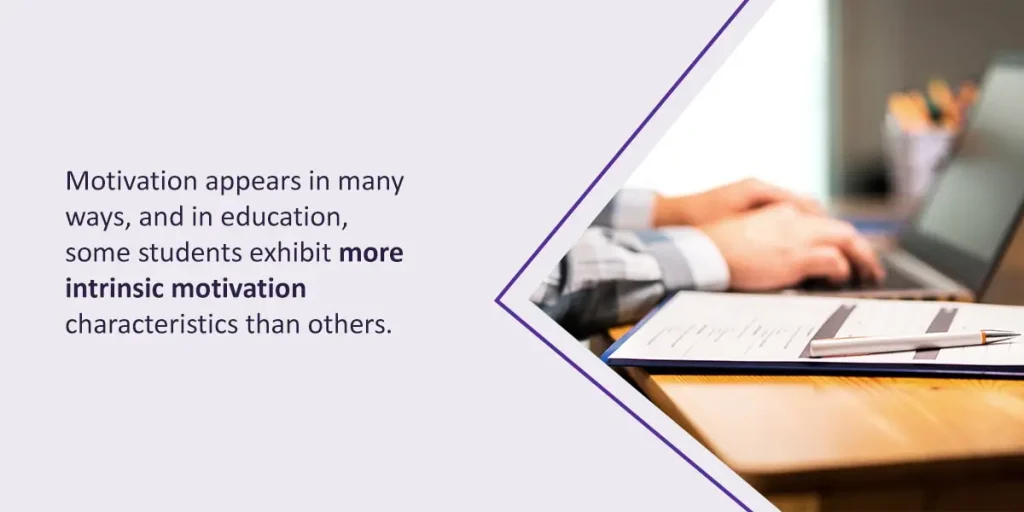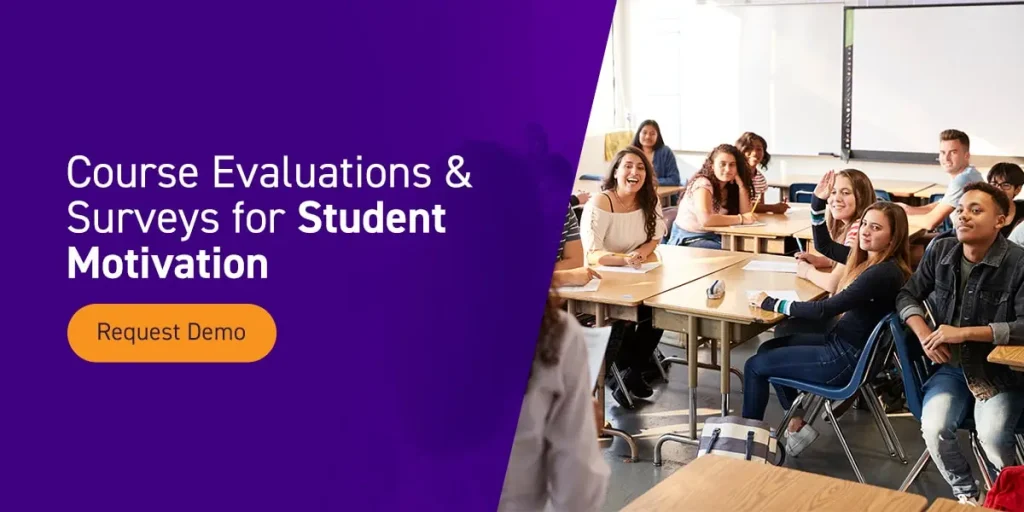



Motivation in education is vital for developing a sense of lifelong learning. To keep your students on track, you can use student feedback to discover common problems that could be impacting students’ motivation. Surveys give your students the opportunity to address the issues they have so their voices are heard while also identifying any pain points in your institution.
Improving your institution and the motivation of your students starts with a conversation. Giving your students a voice and including staff in the dialogue lets new ideas and perspectives present themselves. Your team should know when you plan to run a survey, its purpose, and when to expect results and feedback. When your instructors and staff expect feedback, they can prepare to make changes to address student needs for a more fulfilling academic experience.
You can use student surveys to track your goal progress and evaluate student motivation because they give valuable insights into the trends your institution experiences. As your students identify where your institution can improve, you gain access to a world of new ideas that can boost motivation and increase engagement.
A student survey aims to gauge whether your institution is making headway towards a goal. Each institution’s student survey may have a different goal they’re working towards. For example, one institution may seek to uncover ways to increase student retention while another aims to improve test scores.
You should know the purpose of having the survey, decide how you’re going to present the feedback to the staff and students, and prepare to respond to the potential answers before administering a survey. These assessments should have a clear purpose, and you should have an idea of how you plan to use the information you receive to make institutional changes or redefine initiatives.
Understanding a survey’s intent and objective is essential. Without an understanding of what you’re gauging or how you plan to use that information, the survey data is useless. Once you obtain feedback, use your insights to develop actionable steps to meet initiatives and create a stimulating environment for students and staff.
Understanding motivation can help promote engagement in classrooms, increase student retention, foster talent and create supportive classrooms. All these actions can give your students the enriching and fulfilling academic experience they look for from your institution.
Those who have intrinsic motivation feel rewarded internally, while those with extrinsic motivation need external incentives such as money, recognition, and grades to feel motivated. Each student’s intrinsic motivation for pursuing education aids in their success. A level of motivation questionnaire for students can give insight into how they feel and what you can do to make their experiences more fulfilling. If you can gauge the motivation your students have, you can discover ways to increase and maintain it.
An intrinsic and extrinsic motivation questionnaire for students can help you gauge where students fall on the motivation spectrum and how many students lack the motivation needed to succeed. An intrinsically motivating activity will make a person feel good about it without needing an external reward or recognition. Getting your students to feel intrinsically motivated to learn can be a challenge, but hearing their concerns and taking action to address them can help them better connect with their studies.

Motivation appears in many ways, and in education, some students exhibit more intrinsic motivation characteristics than others. However, there are plenty of other students who still feel intrinsic motivation but are harder to identify. Instead of trying to determine each student’s motivation level, surveys make it much easier to gather data about your students.
Characteristics of motivation in education include:
Although some of these characteristics can be easy to identify in students, others are harder to recognize. Self-assessment motivation surveys give students an opportunity to express their motivation and give you an idea of how many students possess these qualities without guesswork. You can use this feedback to determine where you should begin dedicating your efforts. Additionally, other student surveys can give insight into where you can improve programs, campus life, sense of community, and more to increase motivation for other students.
Feedback can help improve your school at every level. For instance, giving your students feedback can help boost their motivation. Meeting with students to discuss what they’re doing well and where they could improve lets them know you respect their work and want to see them improve and succeed. Instructors can benefit from end-of-semester assessments by discovering how they can make improvements to their classrooms. Staff members can benefit from input by discovering new resources they can implement to benefit students.
Feedback gives your staff a way to take action to impact the student experience. When addressing initiatives such as engagement and retention, gaining feedback directly from students is an effective way to become aware of school issues that impede student progress.
When you administer surveys, expect to take the feedback and create a plan to address concerns. If students express dissatisfaction in easy classes, work with instructors to create a more rewarding curriculum. If students feel disconnected from their peers, you can begin planning campus events, creating new clubs, or inviting students to participate in a community event. Creating a more satisfying student environment will help increase their engagement and retention.
With software that seamlessly integrates feedback, your institution can reflect on trends quickly and easily. Watermark Course Evaluations & Surveys let you review and act on your findings and track trends over time to monitor initiative progress. By addressing student concerns and fostering a more enriching environment, you can create a more lasting connection between students and their education.

Watermark provides higher education engagement and retention solutions that work. Insights inspire progress, and we want to help you collect this data and identify trends over the years that can transform each student’s experience.
Watermark Course Evaluations & Surveys streamline the data collection process, making it easier to track trends and start taking action to improve your institution. You can pair this software with Student Success & Engagement to give your students individualized approaches to success as they navigate their studies.
Deliver a student motivation survey self-assessment and course evaluations to your students and begin taking the steps to create a more enriching experience at your institution. Request a demo of our software and start increasing student motivation and engagement.





























































































































































































































































































































































































